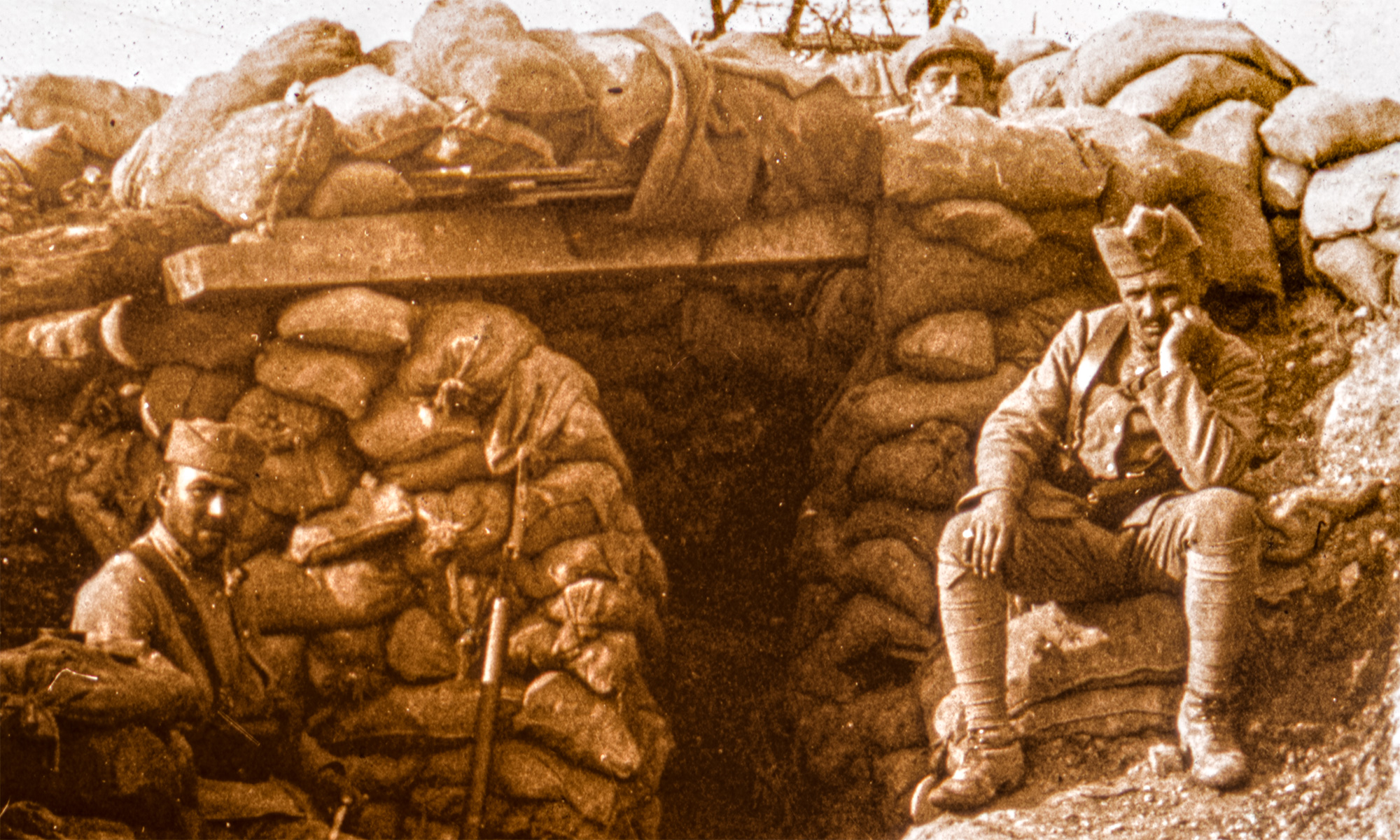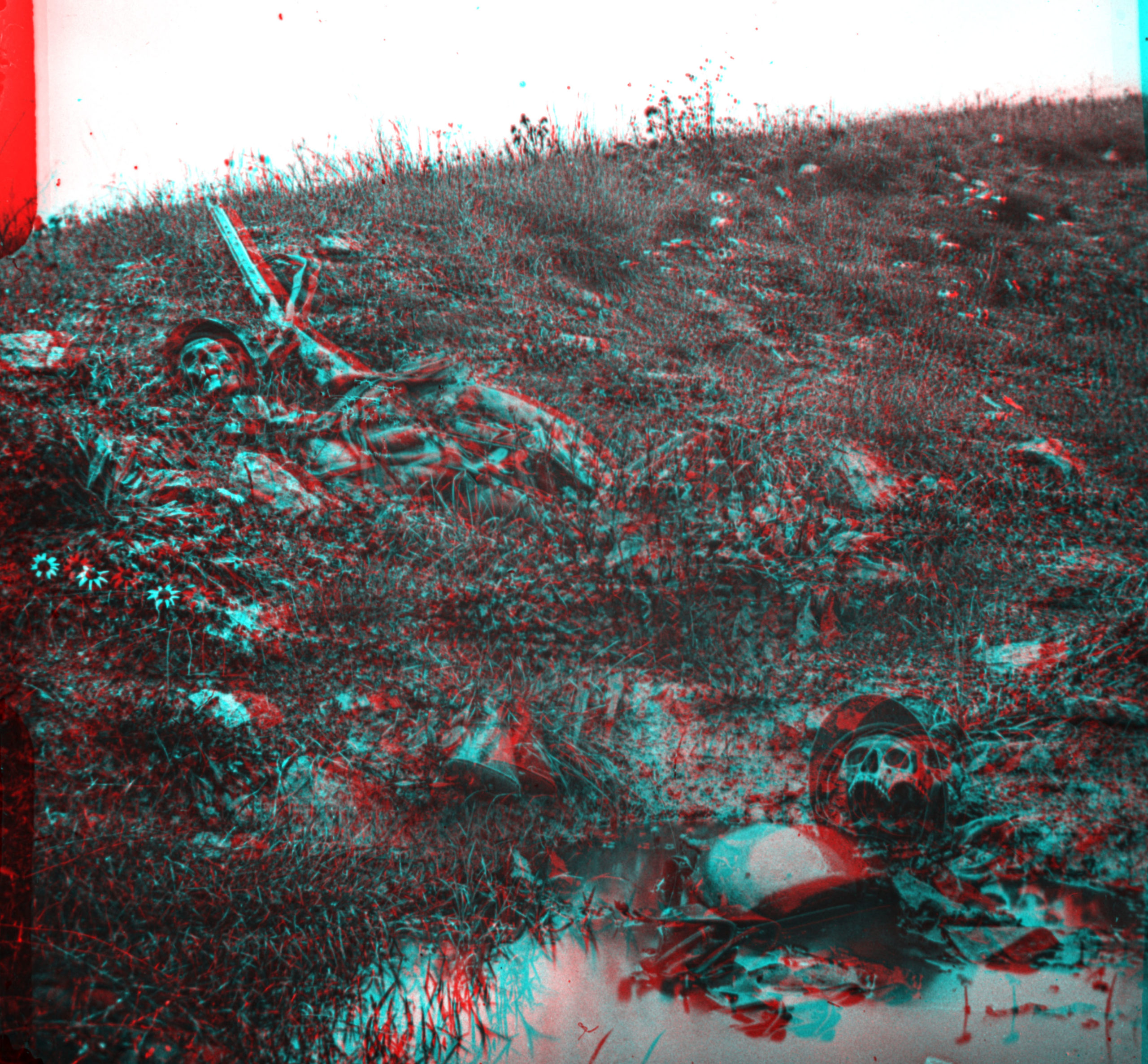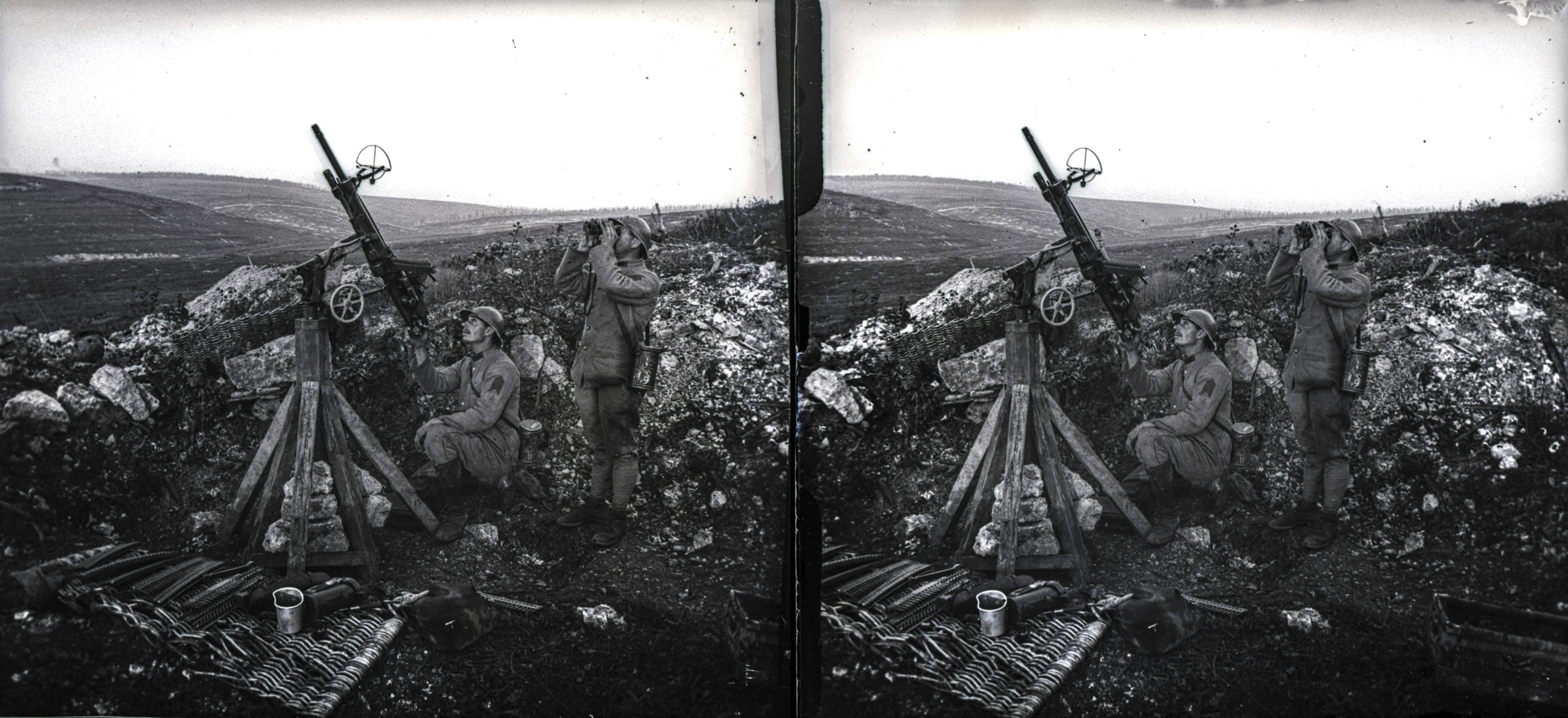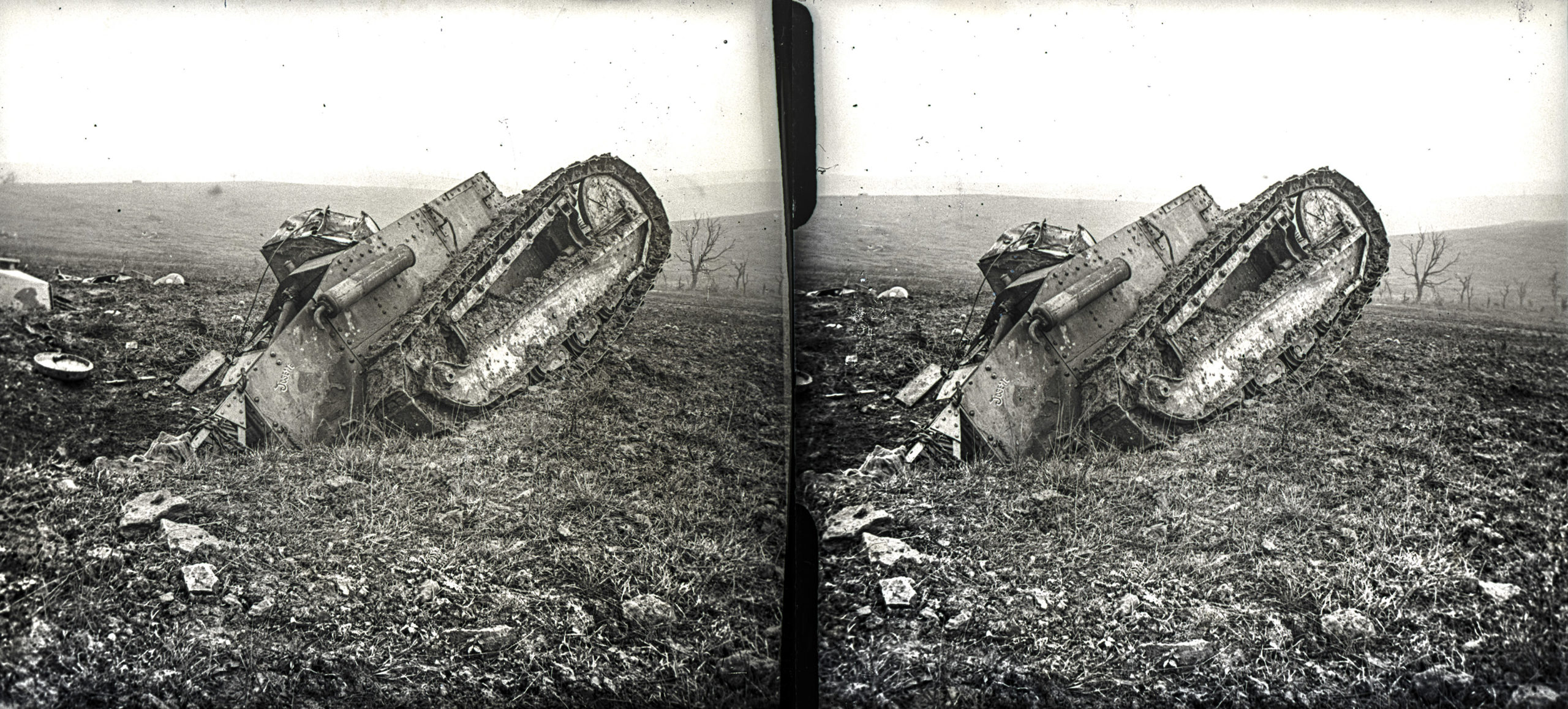Behind the scenes at the Jordan/Ference Collection (Great War in 3D), a lot of thought on archival priority occurs in order to bring our user base the most significant collections as quickly as possible. Oftentimes, as Curator, I have to make hard decisions. For example, would it be of more benefit to more readers to provide ten new scans from negatives from Salonika, or ~75 new scans from positives from Hôpital Janson? In this particular case, I opted for the hospital images – they would take only twice as long to process, and produce 7.5 times the new material. Additionally, I judged the photographic quality and overall allure of the Janson slides to best those of Salonika. Had the latter been more interesting, as in the last group from that front, I would have probably gone in that direction.
So bear with me for a moment, and I will explain why neither set is yet available, why I’m knee-deep in a difficult project that will produce (at most) 69 scans of varying quality and interest, and generally how archival priority dictates the mission of Great War in 3D.
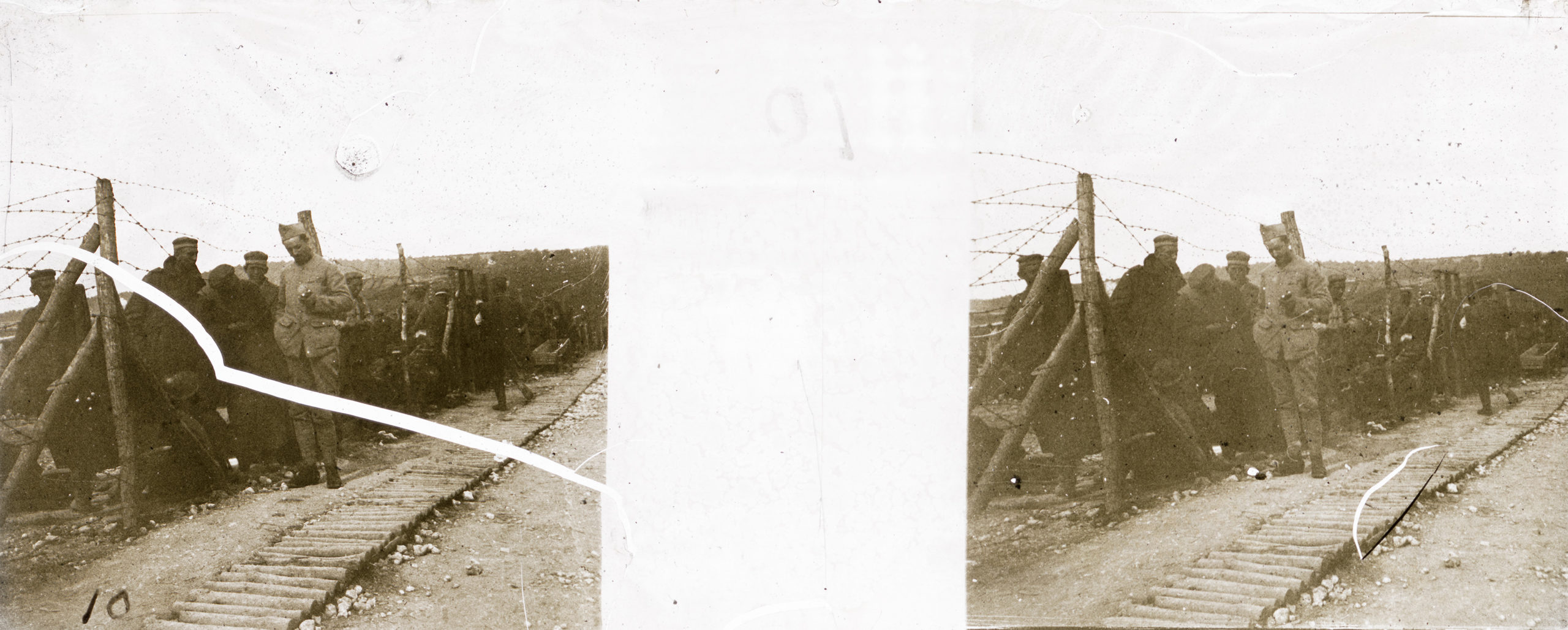
The “Water-Damaged Collection”
A while back, we were offered (and, obviously, accepted) roughly 100 explicitly water-damaged slides for a very reasonable price. Supposedly, about 15 of the slides were in decent shape, and about 15 more were “salvageable”. Because of the slew of recent high-priority accessions in the last few months, they sat on a shelf waiting to be opened and examined until last week. However, as soon as I opened them and saw both the condition and some of the subjects, I immediately halted work on the Otto Forck (Leipzig) Collection and the Hôpital Janson Collection in order to work on these slides. They are now being referred to as “The Water-Damaged Collection”.
While the numbering scheme common to many of the slides indicates that this was likely a more or less complete collection, the variety of cameras and emulsions used indicate the likelihood that it is an artificial collection. (This is in opposition to a cohesive collection – that is to say, single-author/camera/unit, or some other unifying authorship factor.) So why did it jump to the front of the archival priority queue?
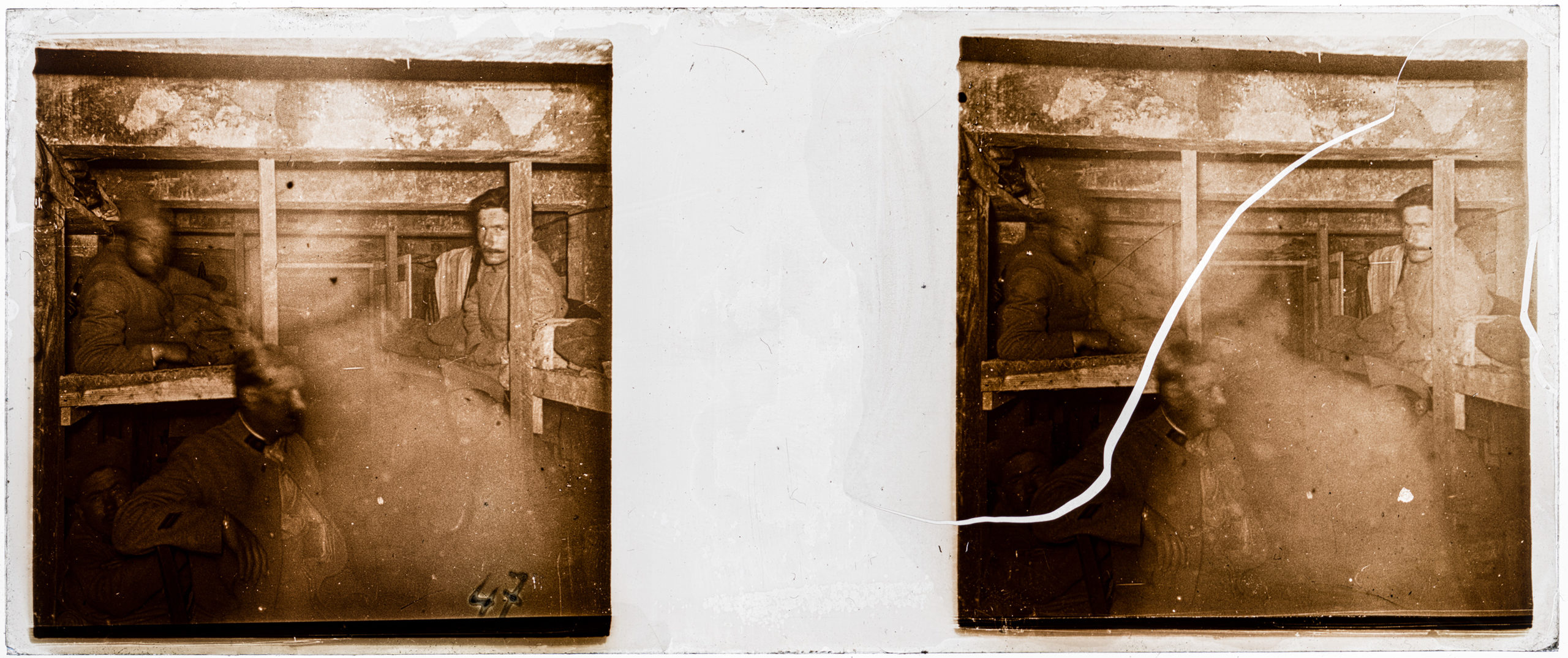
1) Immediate Need for Preservation / Conservation
The slides from this collection are indeed in awful condition. Some show only typical signs of water damage – slight warping to the emulsions, tiny mold spots, and the like. Most, however, are damaged, some irreparably. Most slides have at least one split in the emulsion, caused by the emulsion having been immersed in water and then dried to a brittle state. Almost all have some of the emulsion loose, and hanging from the glass. To my archivist brain, it is painful to have had to classify 27 of the slides as NS (alternately “Not Scanned” and “Non-Salvageable”). On the other hand, it is gratifying to see that far more than 30 slides are salvageable – with varying degrees of effort. I’ll address this later.
But in general terms, these slides are degrading, and degrading fast. Just while taking a cursory look through them, emulsion flakes started to coat my workspace. As I started to unfurl some of the emulsions – many completely detached from the slides – they’d crack and spring back into place. Archival priority in this case dictates that I immediately take the best possible scan of each artifact, and then sleeve it as carefully as possible. Even getting to this point took days – for fewer than 100 slides. Various solutions had to be used for different problems. I won’t bore you with the details, but it was about 90% elbow grease, and 10% inspired problem-solving.
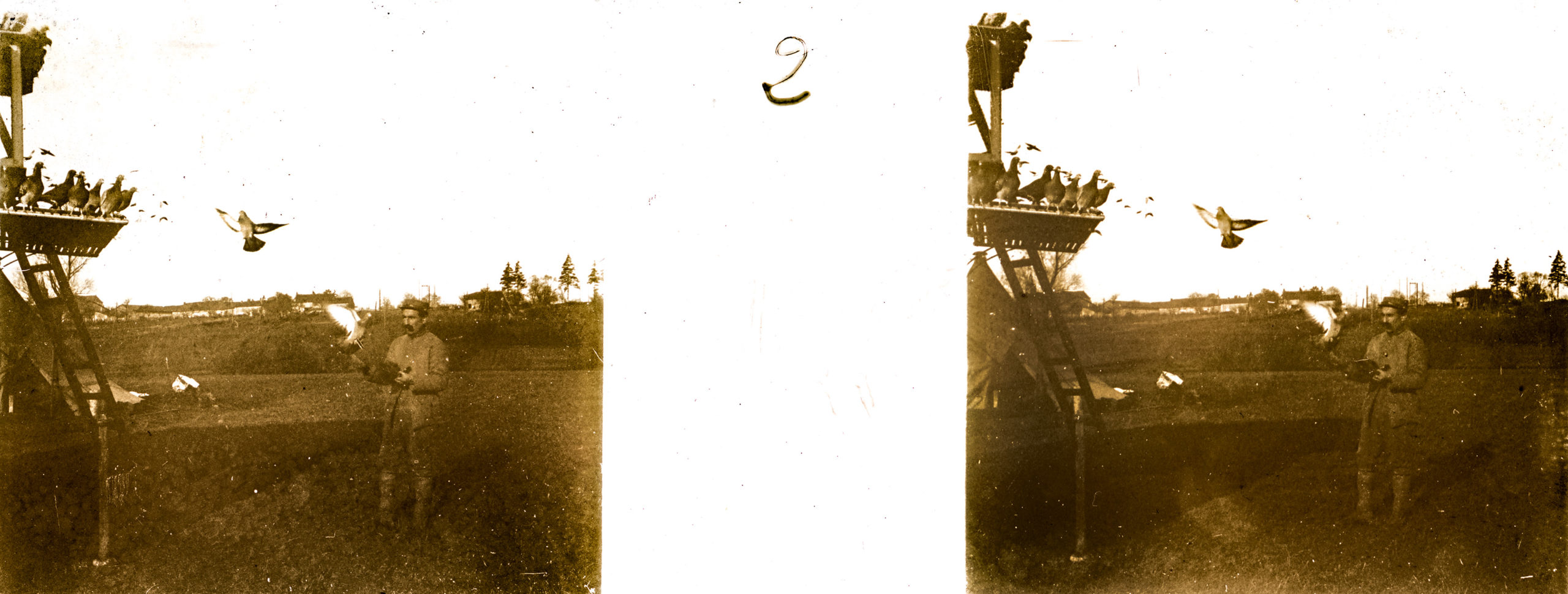
2) Materiel Merit of Some of the Material
As it turns out, quite a large number of the images in the Water-Damaged Collection are rather mundane, content-wise. The first image in this article depicts a fairly common subject – a lone French soldier guarding German POWs. In addition to numerous commercial slides, plenty of other amateur collections have images like this. However, the image above features carrier pigeons, the largely unrecognized avian heroes of the war, and the officer handling them – and is altogether unlike anything else in the Jordan/Ference Collection. There might be other images of messenger pigeons, but having the coop, the birds in flight, and so on – this is an image that can’t be seen elsewhere.
And up above, the badly damaged “spirit photo” (in which a ghostly soldier, seemingly too close to the camera and yet in a decent 3D space, has invaded a French dugout) is also something of a rarity. Spirit stereoviews had been in vogue a generation prior in France, as something of a novelty. Many of them deal with morality plays. But military spirit photography? This is something new entirely! Or at least, something quite uncommon. Clearly, that image deserves both immediate preservation concerns to be addressed, as well as some digital chicanery to restore it to its former glory.
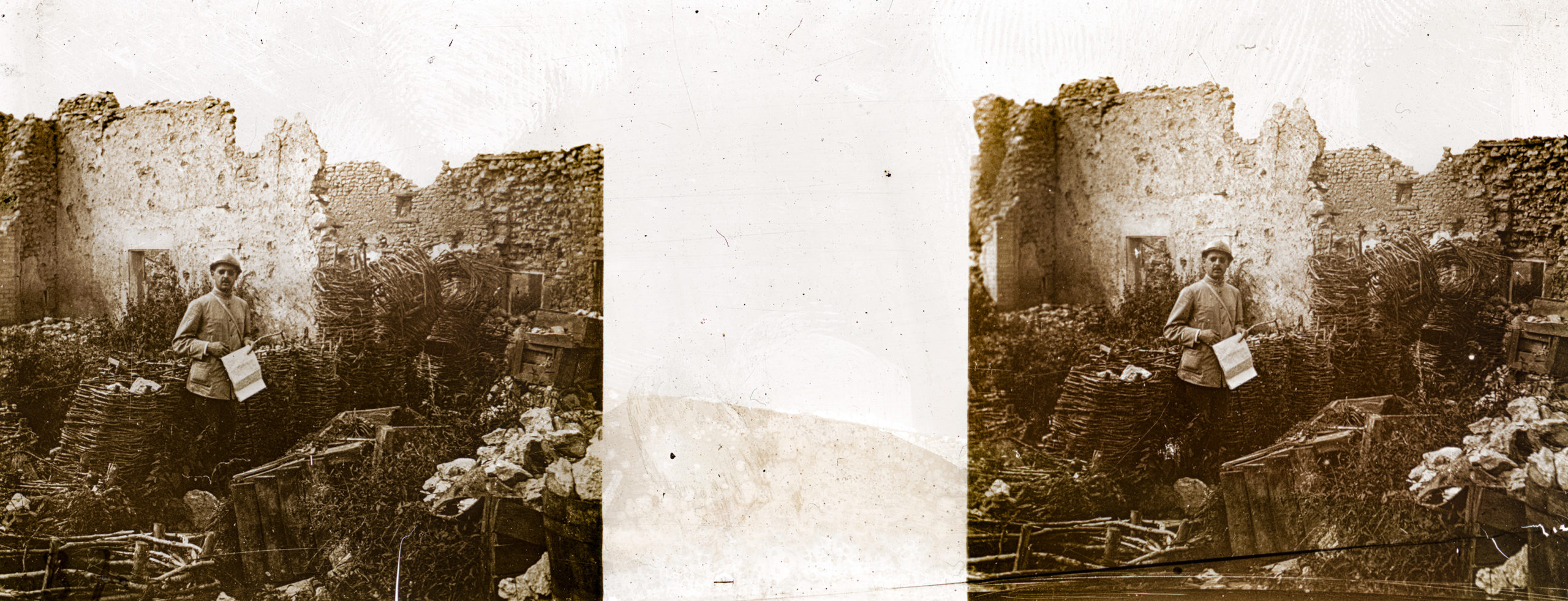
Archival Priority and Artificial Collections
So is the new mission to remediate all 69 of the slides that have been fully digitized and make them ready for display in the Great War in 3D Image Gallery? Absolutely not. The critical work of digitizing the best versions of the salvageable slides is done. However, preparing these slides for display can mean a level of effort that’s not much different from editing an average slide – such as in the example directly above – or could take hours, as fixing up the “spirit photo” took:
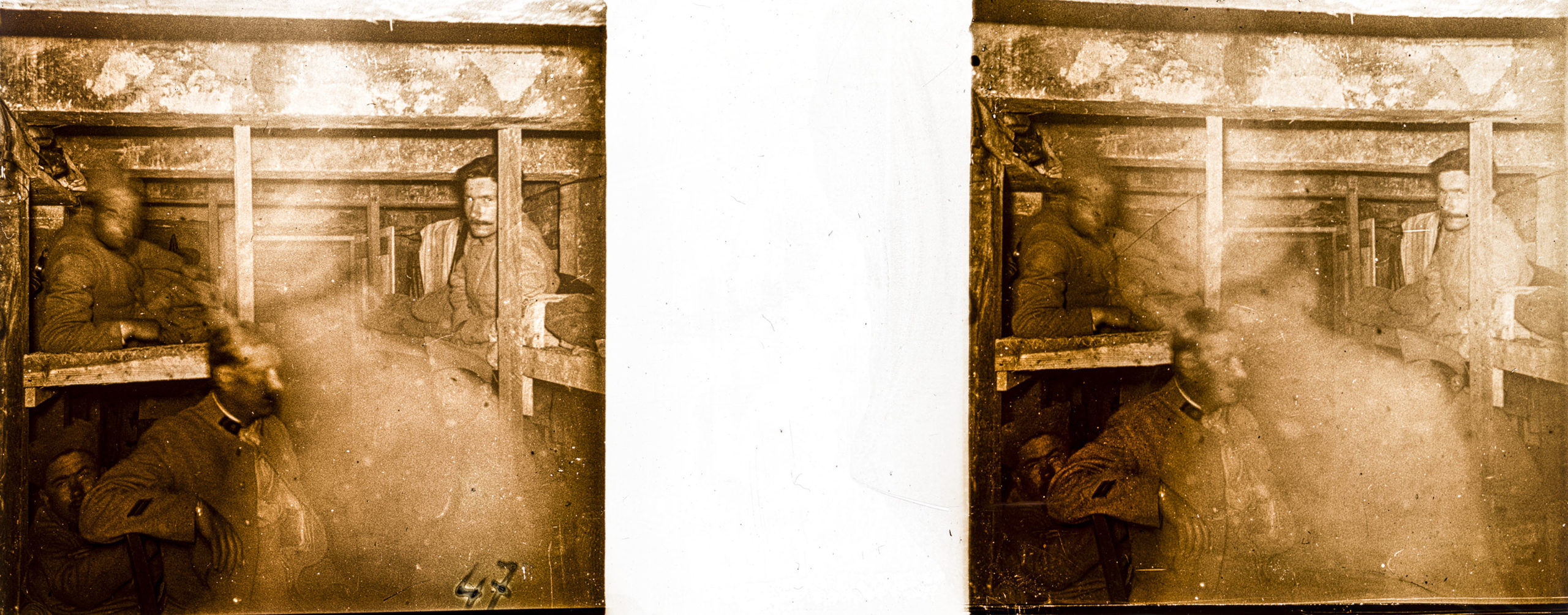
This is clearly how the photo above was meant to be seen. But to get from the base scan to this point, several pieces of the emulsion had to be created as separate layers, warped in order to fit into its appropriate place, and fit back together again. The actual physical artifact is mostly ruined; it will never display in a stereoscope again. But thanks to Photoshop and time spent listening to podcasts with my wife, it now exists permanently as a digital file, free to the public for non-commercial use as are all works of the Jordan/Ference Collection. So when the collection is posted to the Gallery in a month or two, what will make the cut?
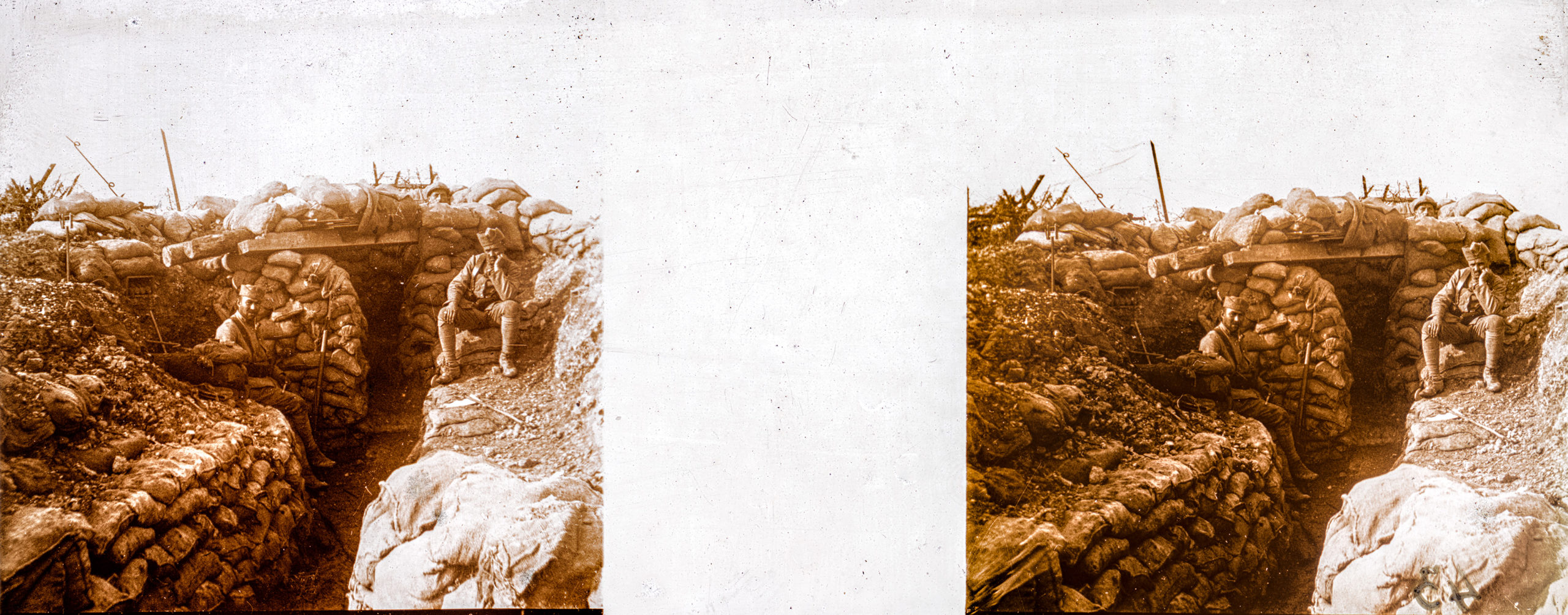
What Merits Inclusion?
The most stunning and unique stereoviews will be included in the final published Collection, regardless of how long it takes to restore them. In the photo above, clearly meant to be a portrait of two soldiers at their post, a third joker has snuck into the scene – something we now call “photobombing”. This makes it an utterly delightful image. Thankfully, it took less than 15 minutes of digital work to prepare this image for digital display.
However, many of the images in the Water-Damaged Collection are either of fairly common subjects or in downright awful condition. There is an image of No Man’s Land that now exists as a scan of six disconnected pieces of emulsion. Could I spend eight hours to restore this image? Sure. Will I? Hell no! Our archive has an all-volunteer staff of fewer than ten. Eight hours of time could create 50 base scans, 100 edits of slides in perfect condition, or any number of other benefits to the collection.
It is important to note that this consideration is made with the assumption that this is an artificial collection. If it were a known cohesive collection – clearly taken by a single officer, for example – much more effort would be put in to salvage every slide. In such a collection, each slide gives context to every other. This is not the case here.
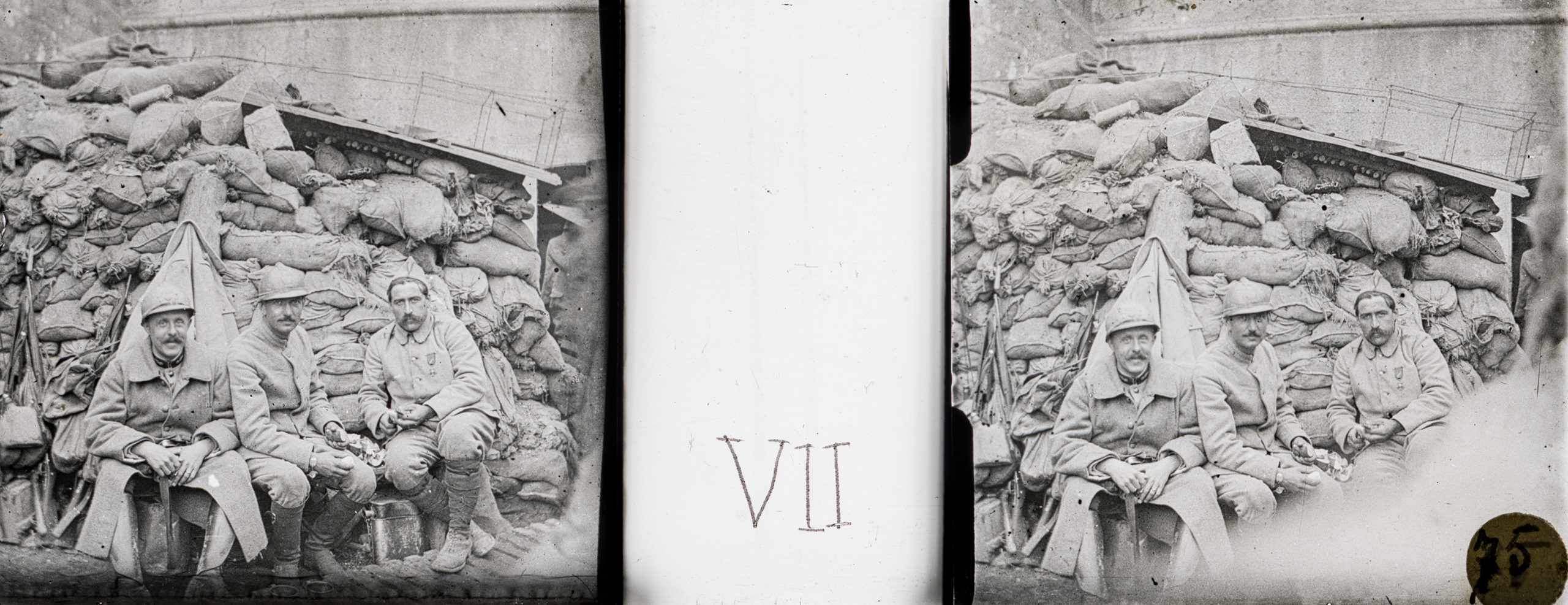
Final Thoughts on Archival Priority & This Collection
These stereoviews were purchased for about a dollar apiece, and it was hoped that there would be enough in the parcel to justify the expense. Having seen them, we certainly got more than our money’s worth. However, this is not to say that everything we received merits permanent conservation and inclusion in our Great War in 3D Image Gallery. All of the best images will be digitized. All of the images that require minimal effort will be digitized. It is likely that the best among them will also receive anaglyphs, in our ongoing effort to aid in accessibility for those that cannot free view.
However, just like any non-corporate/non-government archive, we are constrained by storage space, money, and archivist-hours. We’ve already purchased the slides, and we have no problem housing ~100 slides in our climate-controlled archive. Our archival priority of ensuring proper preservation and conservation has been met to the best of our ability, and now I will edit the most important images from the Water-Damaged Collection and make them available as soon as possible. But I will not sacrifice hours that could be spent getting Otto Forck (Leipzig), Hôpital Janson, or Salonika II ready for publication trying to salvage yet another standard ruins stereoview simply because it was adjacent to an amazing image of carrier pigeons in action.
I hope that this article has helped clarify the archival priorities and workflow of the Jordan/Ference Collection, and I hope you all enjoy the final product – I’m guessing about 30-40 slides – in a month or two.
Ian Ference
Curator, The Jordan/Ference Collection of Great War Stereography

